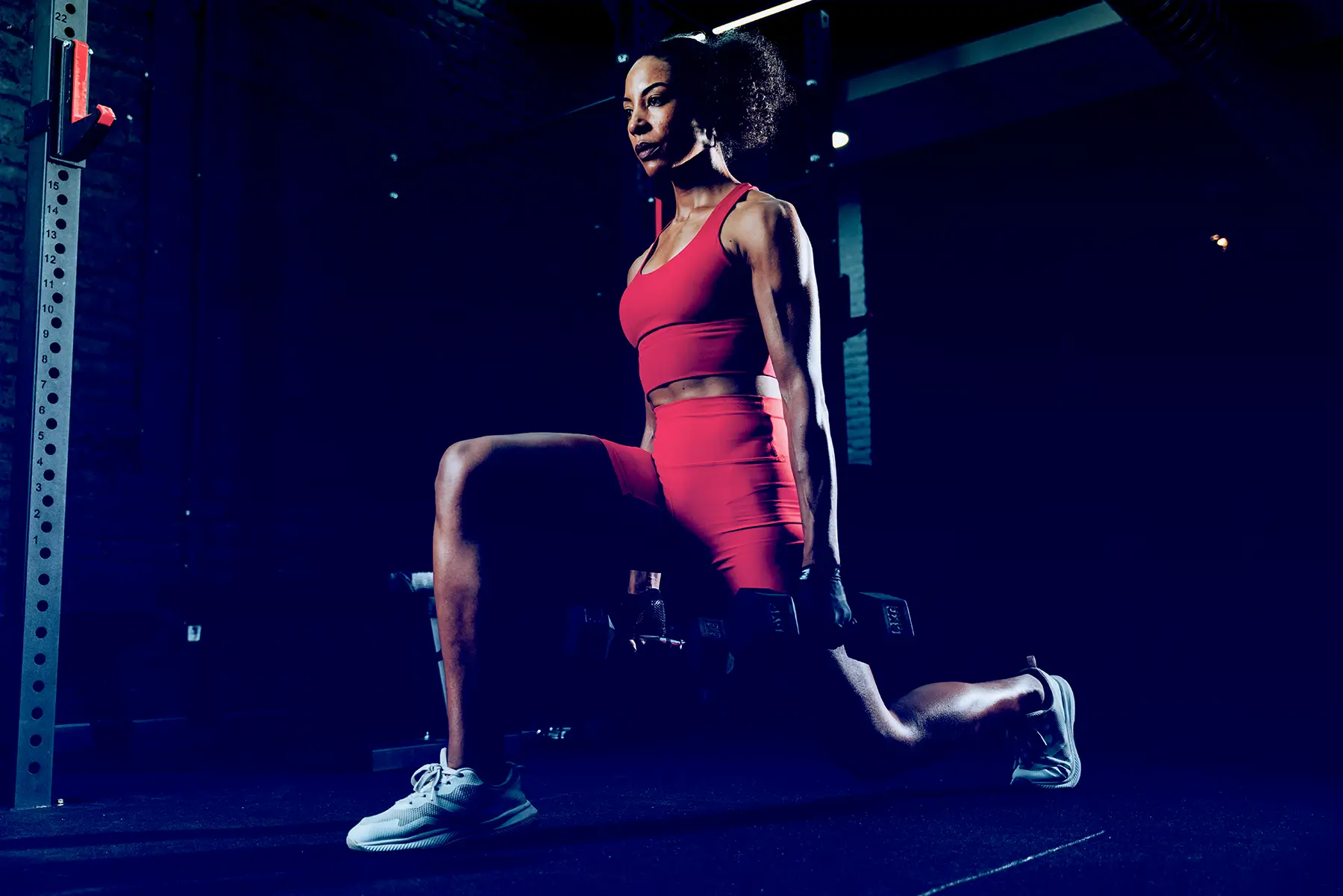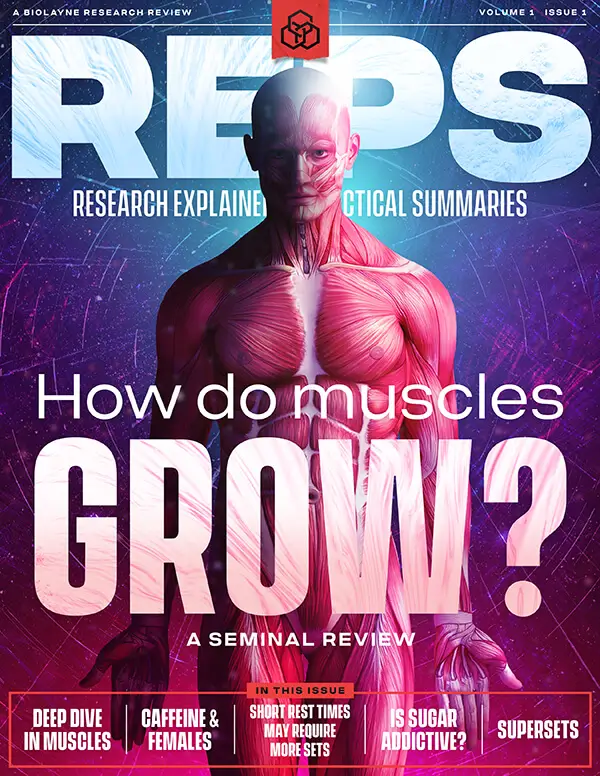Can muscle grow the same way with heavy or light weights? This study suggests that trained lifters gained similar muscle size with both, but heavy loads produced greater strength gains.
Overview
- What did they test? Researchers compared low-load (20–25 reps to failure) and high-load (3–5 reps to failure) resistance training in trained men and women over 9 weeks. Each participant trained one leg with heavy loads and the other with light loads, allowing a direct within-person comparison. They measured strength, muscle thickness, and muscle cell-level changes (e.g., fiber size, satellite cells, and myonuclei).
- What did they find? Both heavy and light training increased muscle thickness similarly (~7–8%), but strength outcomes diverged. Heavy loads were superior for single-joint strength (leg extension), while both loads improved multi-joint strength (leg press). At the cellular level, neither condition showed detectable increases in fiber cross-sectional area, though satellite cells increased in type I fibers across both conditions.
- What does it mean for you? If your goal is muscle growth, this study suggests you can achieve it with either heavy or light weights, as long as you train close to failure. However, if maximal strength is the priority—especially in single-joint lifts—heavier loads are more effective. For lifters who can’t tolerate heavy loading (e.g., due to injury, joint issues, or recovery demands), light-load training still offers a viable option to promote muscle growth.
What’s The Problem?
For decades, a common rule of thumb has been that you need to lift heavy weights to maximize muscle growth and strength. Loads above ~70% of your max have been promoted as most effective, based on how motor units are recruited. In short, this thinking is based on the size principle suggesting that the higher the resistance the more muscle fibers are recruited to contract. But not everyone can—or desires to—train heavy all the time, whether due to injuries, joint stress, or recovery limits. Research has suggested that lifting lighter weights to failure might deliver similar hypertrophy, yet findings have been mixed and most studies were done in untrained individuals 1 2. Few studies have directly compared true heavy (3–5 RM) vs. very light (20–25 RM) training in trained individuals, and little is known about potential fiber-type or cellular differences. This study was designed to test whether low-load training can match high-load training for hypertrophy and strength in resistance-trained individuals.
Purpose
The primary purpose of this study was to assess the muscular and myocellular effects of 9 weeks of low-load resistance exercise training (LL-RET, 20–25 RM to failure) compared to high-load resistance training (HL-RET, 3–5 RM to failure) in resistance-trained individuals. A secondary aim was to examine whether the two loading regimens produced different, fiber type–specific adaptations.
Hypothesis
The authors hypothesized that the magnitude of muscular adaptations would be similar between conditions, but that HL-RET would induce greater increases in muscle strength compared with LL-RET. They also hypothesized that LL-RET would stimulate adaptations primarily in type I fibers, whereas HL-RET would preferentially stimulate type II fibers.







